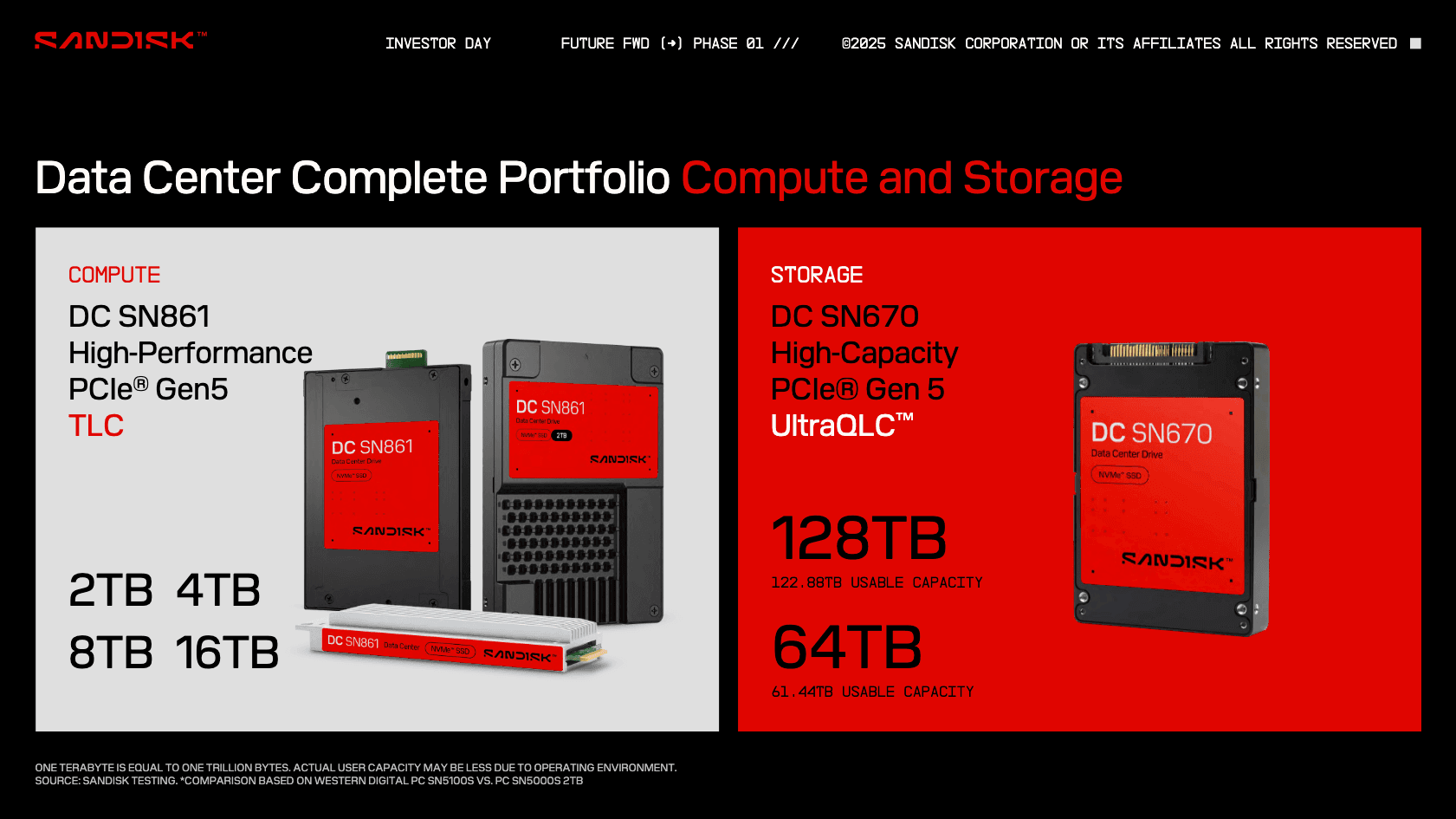With its Stargate controller and BiCS8 QLC chips, Sandisk is leading the next generation of ultra-high-capacity storage for data centers and artificial intelligence applications.
SanDisk has made a significant impact in the storage sector by confirming during its Investor Day 2025 a roadmap that includes the gradual release of SSD units with capacities of up to 512 TB by 2027, with models featuring 128 TB already available this year. This investment responds to the growing demands of data centers, generative artificial intelligence, and the data economy.
Stargate + BiCS8: The Architecture That Makes It Possible
At the heart of this technological revolution is the new proprietary controller Stargate, paired with the BiCS8 QLC 218-layer NAND chips, optimized for higher densities, transfer speeds exceeding 80%, and a 35% improvement in write bandwidth compared to previous generations.
This architecture leverages the innovative CBA (CMOS Bonded Array) technology, which directly bonds NAND arrays with their CMOS logic, reducing space requirements and accelerating both production and energy efficiency. According to Sandisk, this technology will not only enable reaching 512 TB in conventional SSD format but also paves the way for future 1 PB units, although these do not yet have confirmed release dates.

Products Already on the Market and Timeline
The first commercially available SSD based on this technology, the UltraQLC DC SN670, will start shipping in the third quarter of 2025 with capacities of 64 TB and 128 TB, featuring substantial performance improvements over the best current models on the market:
| Specification | SN670 (128 TB) | Improvement Over Previous Models |
|---|---|---|
| Sequential Read | 14,500 MB/s | +7% |
| Sequential Write | 14,000 MB/s | +27% |
| Random Reads | — | +68% |
| Random Writes | — | +55% |
In 2026, a model with 256 TB will be released, and in 2027, the highly anticipated 512 TB version. All models are initially targeted at the enterprise market and data centers, where there is already demand for such solutions for AI clusters and massive data storage.
Towards a 1 Petabyte SSD
While Sandisk has not officially announced dates for a 1 PB unit, the company has publicly expressed its intention to reach that milestone. The combination of the Stargate architecture with BiCS9—the next-generation NAND with over 300 layers—would be the next natural step on this path.
Beyond capacity, Sandisk is also working on new scaling techniques and optimized controllers with hardware accelerators and energy-efficient AI-based technologies, further reinforcing its position as a leader in the professional storage market.
Impact on the AI Ecosystem and Data Centers
The ability to offer SSDs with densities over 100 TB without sacrificing performance has a direct impact on the efficiency of storage clusters for AI, such as those used for training language models or performing real-time inferences. According to Sandisk, these new solutions will enable the management of data lakes over 100 PB and optimize the relationship between cost, energy consumption, and IOPS per terabyte.
A Future Vision Backed by Decades of Innovation
With more than 11,000 active patents and a strategic partnership with Kioxia in Japan, Sandisk not only leads in capacity but also in intellectual property and large-scale manufacturing. Its vision: to redefine what is possible in flash storage, anticipating the needs of the AI era and the data explosion.
References:

